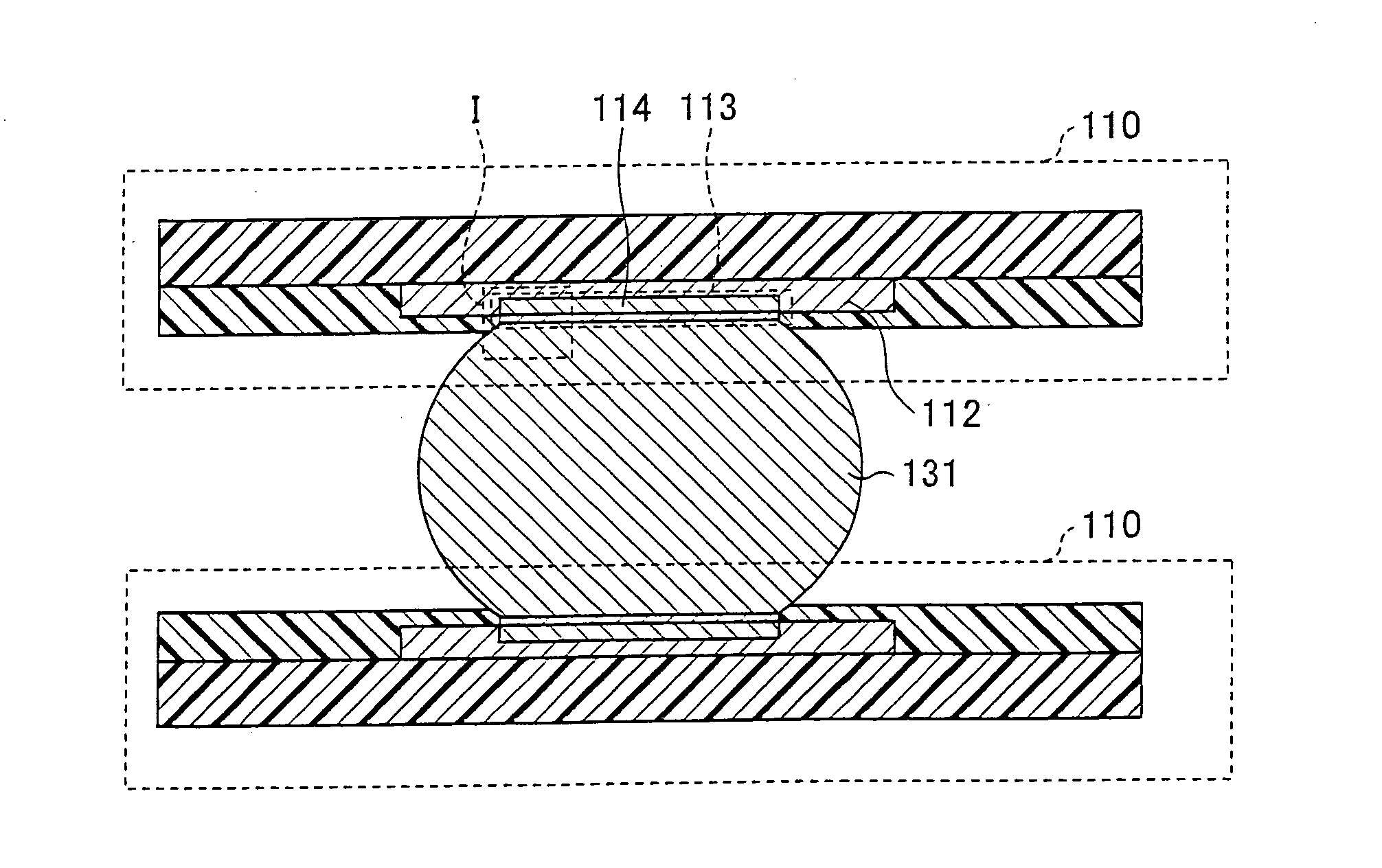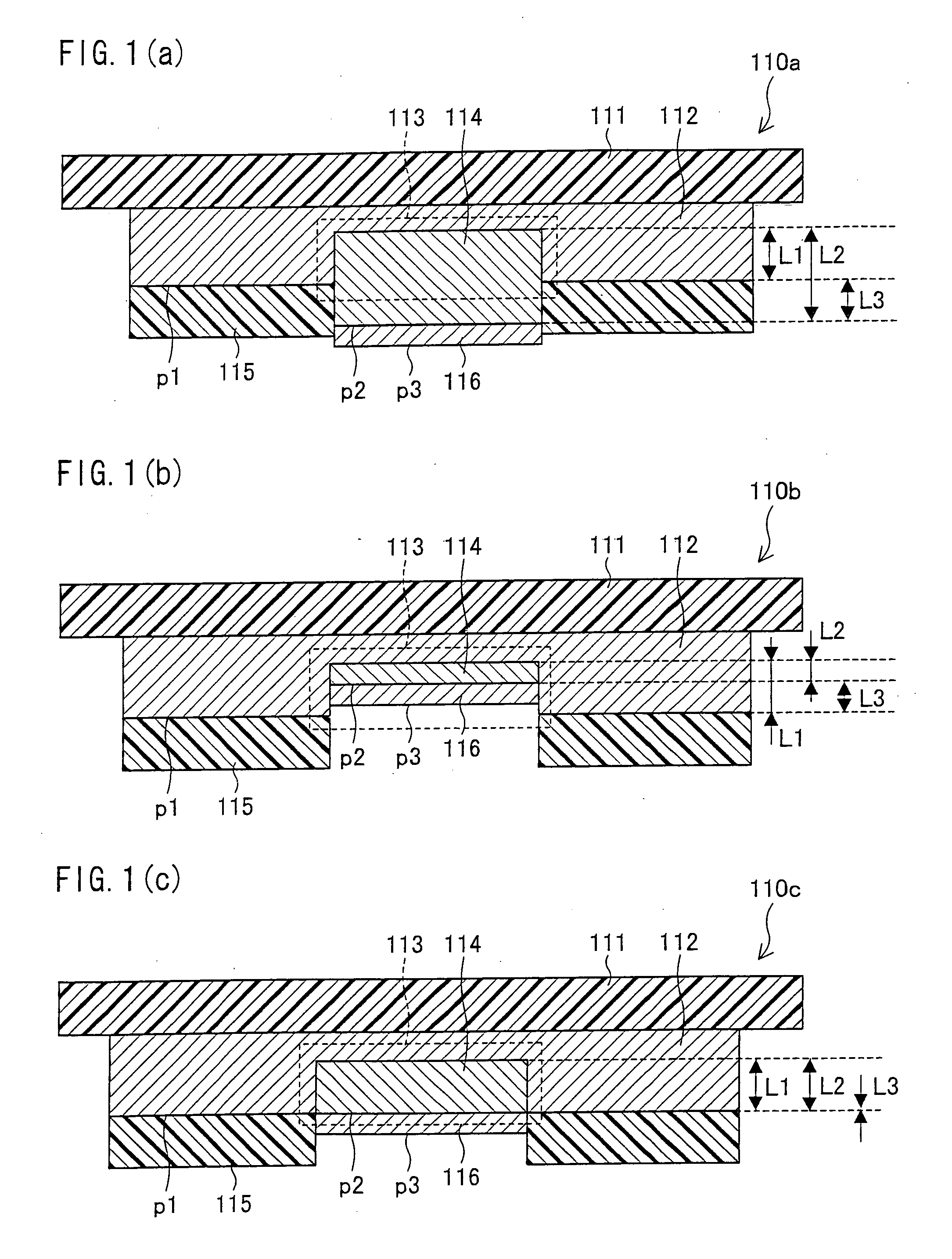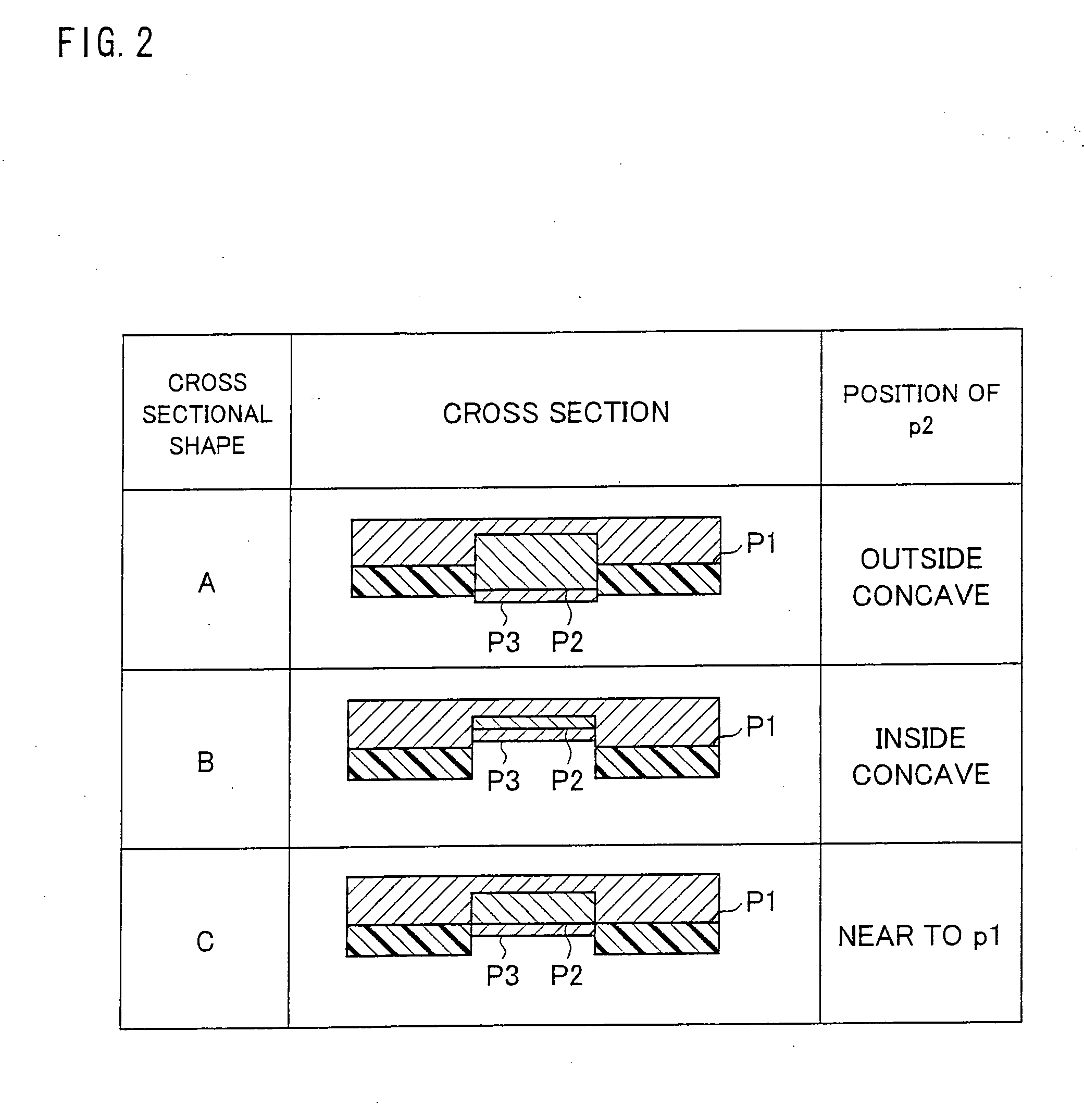Crack-resistant solder joint, electronic component such as circuit substrate having the solder joint, semiconductor device, and manufacturing method of electronic component
a solder joint and crack-resistant technology, applied in the direction of manufacturing tools, soldering apparatus, transportation and packaging, etc., can solve the problems of fragile alloy layer, tin-containing alloy layer is fragile, and the surface of copper (cu) frequently used as a conductor pattern is likely to be oxidized, so as to prevent the solder from cracking and reduce the mechanical stress
- Summary
- Abstract
- Description
- Claims
- Application Information
AI Technical Summary
Benefits of technology
Problems solved by technology
Method used
Image
Examples
embodiment 1
[0058]With reference to FIG. 1 to FIG. 7, the following description will explain an embodiment of the present invention.
[0059]FIG. 3 is a cross sectional view of a semiconductor device 100 of the present embodiment. The semiconductor device 100 of the present embodiment includes a circuit substrate 110, a semiconductor chip 120, and external connection terminals 130. The circuit substrate 110 has a wiring layer (not shown) provided on the circuit substrate 110, and the semiconductor chip 120 is provided thereon. As the substrate 111, a known material may be used. For example, a glass substrate or an epoxy substrate may be used. Further, the wiring layer can be formed by a known method. For example, the wiring layer can be formed by etching a copper foil or an aluminum foil. Further, the wiring layer may be formed in a multi-layer manner as necessary.
[0060]Further, the semiconductor chip 120 can be connected to the wiring layer by a known method. For example, the wiring layer may be ...
embodiment 2
[0110]The following description will explain another embodiment of the present invention with reference to FIG. 8 to FIG. 10. Note that, the present embodiment is different from Embodiment 1 only in the below described points. Further, for convenience in descriptions, the same reference numerals are given to members having the same functions as those illustrated in the drawings of Embodiment 1, and descriptions thereof are omitted.
[0111]The present embodiment describes the case of the cross sectional shape B illustrated in FIG. 1(b) and FIG. 2.
[0112]A solder joint of a semiconductor device 100 of the present embodiment is formed so as to have the cross sectional shape B. That is, a concave 113 is formed in a land 112, and a nickel plate layer 114 is formed so that its thickness is smaller than a depth of concave 113. Further, in case where the layer thickness difference L3 is 1 μm or more, the interface p1 and the interface p2 are deviated from each other by 1 μm or more.
[0113]Next,...
example 1
[0124]Next, the following experiment was carried out so as to show that it is hard to crack the solder joint of the present embodiment which had been provided so as to have the cross sectional shape A.
[0125]FIG. 11 is a cross sectional view illustrating how to evaluate the connection reliability of the solder joint by fixing one of two circuit substrates 210a and 210b which had been solder bonded in accordance with the method of the present embodiment and by peeling the other one.
[0126]In FIG. 11, the two circuit substrates 210 arranged in the same manner were solder bonded to each other by using a tin-containing solder 231, and one of the circuit substrates 210 was fixed on the floor as a circuit substrate 210a. Further, the other one was used as a circuit substrate 210b. The circuit substrate 210b was raised upward, and a load was applied to the solder joint. In the present embodiment, a load as in an impact test was applied to a bonding interface in which solder bonding was carri...
PUM
| Property | Measurement | Unit |
|---|---|---|
| Length | aaaaa | aaaaa |
| Fraction | aaaaa | aaaaa |
| Fraction | aaaaa | aaaaa |
Abstract
Description
Claims
Application Information
 Login to View More
Login to View More - R&D
- Intellectual Property
- Life Sciences
- Materials
- Tech Scout
- Unparalleled Data Quality
- Higher Quality Content
- 60% Fewer Hallucinations
Browse by: Latest US Patents, China's latest patents, Technical Efficacy Thesaurus, Application Domain, Technology Topic, Popular Technical Reports.
© 2025 PatSnap. All rights reserved.Legal|Privacy policy|Modern Slavery Act Transparency Statement|Sitemap|About US| Contact US: help@patsnap.com



